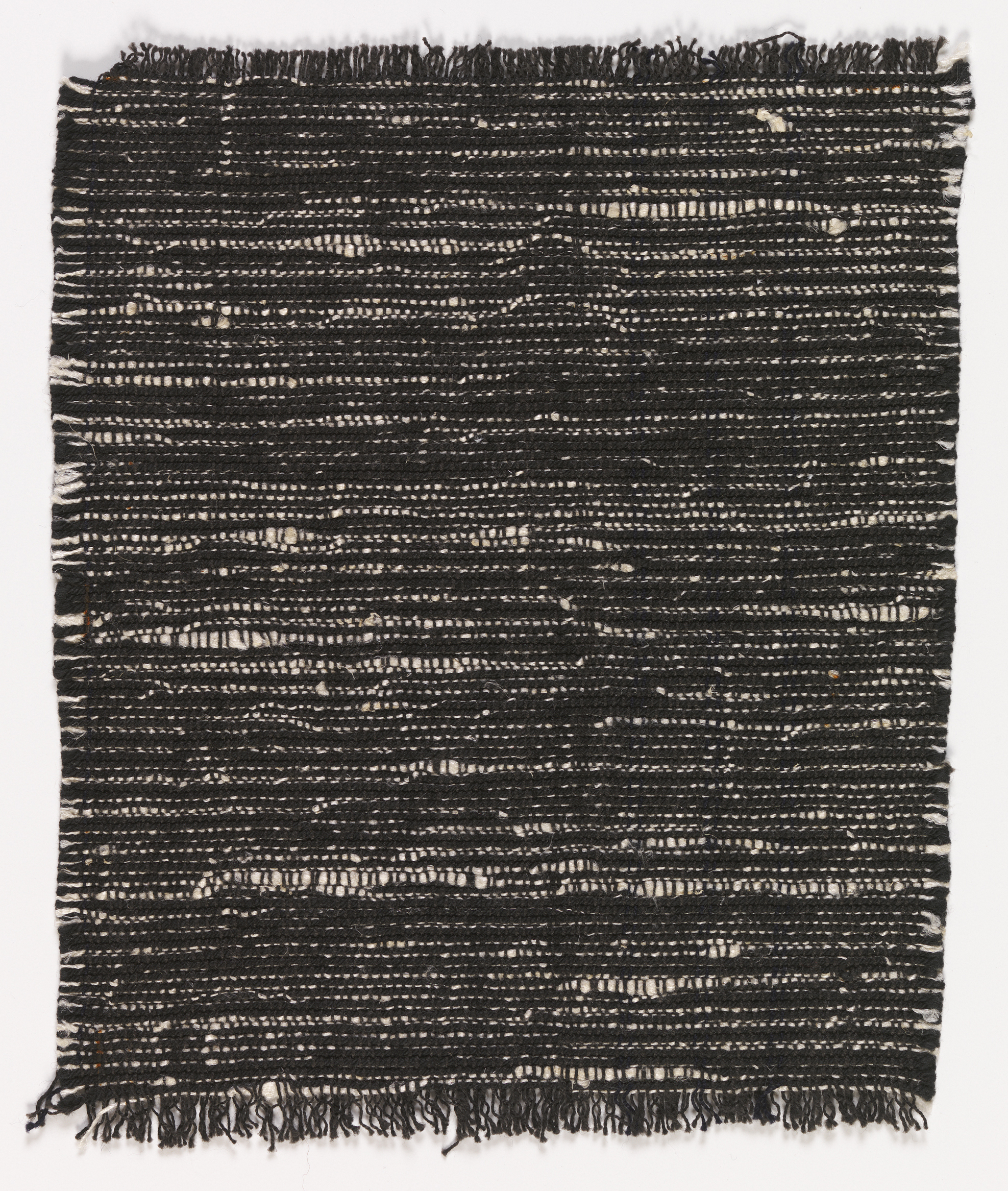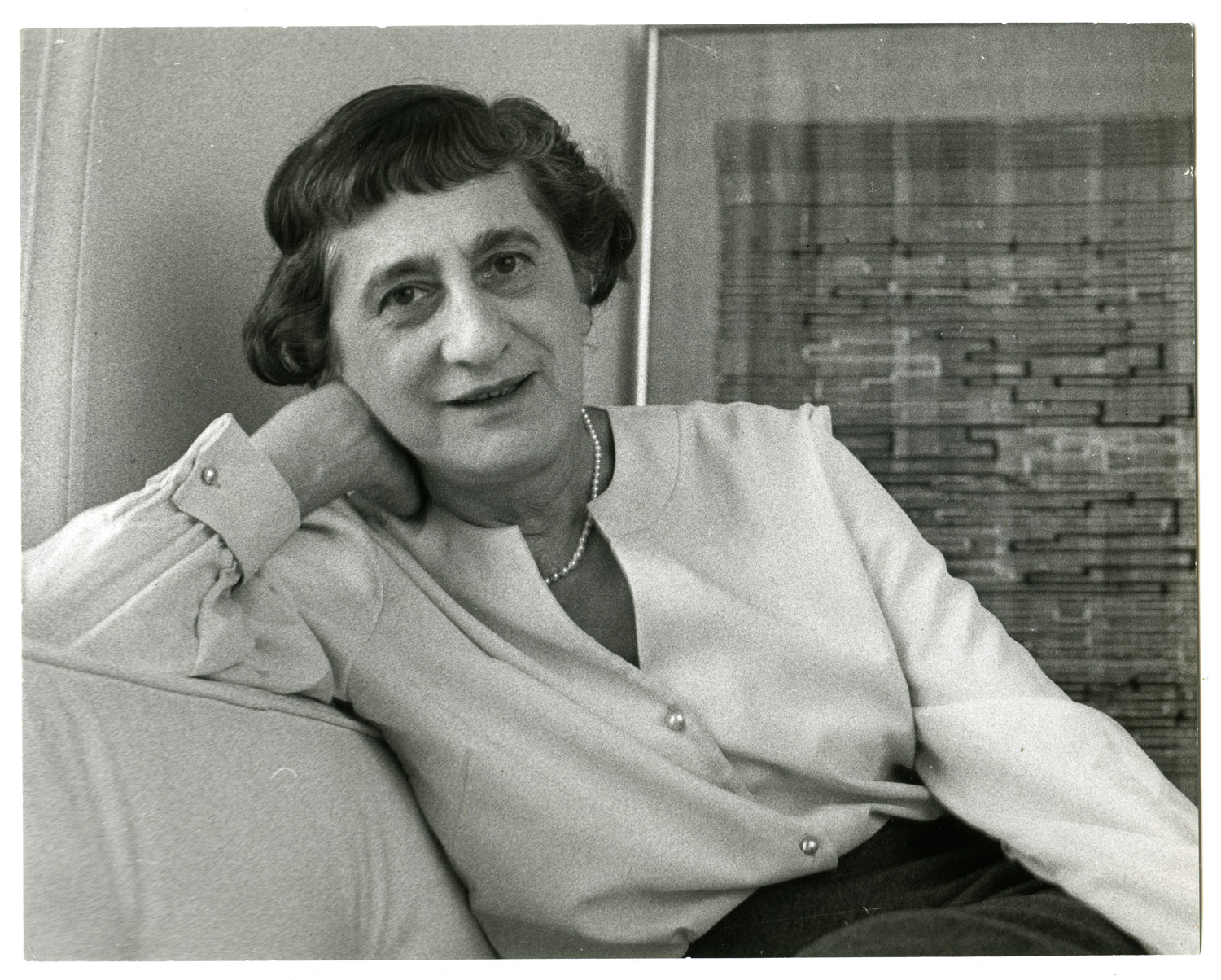August 25 – December 11, 2022
Comprising over 100 objects from the collection of the Josef and Anni Albers Foundation, Anni Albers: Work with Materials spans the artist and designer’s wide range of production over a career of seven decades. Taking its title from her 1937 essay of the same name, the exhibition highlights the nimbleness with which Albers moved between mediums. It emphasizes her fluid transitions between creating artwork and designing more functional and commercial objects. Albers’s drawings, prints, textile samples, rugs, and writings demonstrate a wide-ranging curiosity and multi-faceted proficiency.
Foregrounding the transition from weaver to printmaker that Albers made in the 1960s, the exhibition begins with Connections, a series of nine silkscreen prints from 1983 in which Albers recreated images from every decade of her long career. The exhibition proceeds to show in greater detail the visual and material connections that drove her evolving studio practice.
In weaving, designing, and printmaking, Albers’s faith in the power of abstraction never wavered. Throughout her widely varied, yet consistent and focused output, we see an artist who understood material not only as a vehicle to carry ideas, but more importantly for its physical and structural potential. As she put it, “if we want to get from materials the sense of directness, the adventure of being close to the stuff the world is made of, we have to go back to the material itself, to its original state, and from there on partake in its stages of change.”
Anni Albers (1899-1994)
Born in Berlin in 1899, Annalise Fleischmann’s early desire to be an artist led her in 1922 to the Bauhaus, the famous German school of art and design. At the Bauhaus she met a fellow student, Josef Albers, taking the name Anni Albers after they married in 1925. The Bauhaus was among the first art schools in Germany to accept both men and women, though most women, including Anni, were placed in the weaving workshop. It was there that her genius with threads first started to show itself, as she created masterful designs for textiles and rugs, and eventually ran the workshop for a short period.
The Bauhaus closed in 1933 under pressure from the Nazis. The Alberses took the brave step of accepting teaching positions at the newly formed Black Mountain College, a small, progressive liberal arts school outside Asheville, North Carolina. It was at Black Mountain that Anni began to focus her weaving practice on what she called her pictorial weavings, which she intended to transcend the medium’s everyday useful connotations and move into the realm of pure art.
After sixteen years at Black Mountain College, the couple left North Carolina in 1949. In that same year Anni became one of the first female artists to have a one-person exhibition at the Museum of Modern Art in New York, which was also the first solo exhibition at that museum of a textile artist. When Josef was made Chair of the Department of Design at Yale University in 1950, the couple moved to Connecticut. They lived in New Haven until 1970, and then in nearby Orange until Josef’s death in 1976 and Anni’s in 1994.
This exhibition was curated by Fritz Horstman, education director at the Josef and Anni Albers Foundation.
View the exhibition brochure Anni Albers: Work with Materials
Related Events
Lunchtime Lecture: New Exhibitions with curator of education Kate Holohan
September 7, 12:15 pm- 1:00 pm
Work with Materials Curator Talk with Fritz Horstman
Reception to follow at Syracuse University Art Museum
September 19, 5:30 pm – 7:30 pm
214 Slocum Hall
Community Day at the Museum celebrating Anni Albers
October 2, 10:00 am – 4:00 pm
Lunchtime Lecture: Anni Albers with museum curator Melissa Yuen
November 16, 12:15 pm – 1:00 pm
Check the museum’s website for more public programs that will be added in the coming weeks https://museum.syr.edu/calendar/




